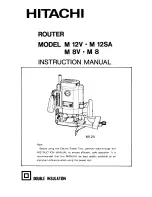
Ref.:
UoD_SpW-10X_
UserManual
Issue:
3.4
SpW-10X
SpaceWire Router
User Manual
Date:
11
th
July 2008
Preliminary
39
146
145
144
143
EXT10_IN_DATA(3)
EXT10_IN_DATA(2)
EXT10_IN_DATA(1)
EXT10_IN_DATA(0)
(0)(dddddddd)
- Data byte
(1)(XXXXXXX0)
- EOP.
(1)(XXXXXXX1)
- EEP.
Bit 7 is the most significant bit of the data byte.
Pull-up resistors (e.g. 4k7
Ω
) should be
connected to these inputs if External FIFO port
10 is not being used.
152
EXT10_IN_FULL_N
Out FIFO ready signal for external input port one.
When high there is space in the FIFO so it can
be written to. When low the FIFO is full.
CMOS3V3
153
EXT10_IN_WRITE_N
In
Asserted (low) to write to the external input
port one FIFO.
A pull-up resistor (e.g. 4k7
Ω
) should be
connected to this input if External FIFO port 10
is not being used.
CMOS3V3
See section 6.1 for information on the operation of the external ports and section 10.3 for timing
details.
5.4 TIME-CODE SIGNALS
The time-code interface signals are listed in Table 5-4. The timing of this interface is shown in
Figure 6-3 and Figure 6-4.
Table 5-4 Time-Code Signals
PinNo Signal Dir
Description
Type
158
EXT_TICK_IN
In
The rising edge of the
EXT_TICK_IN
signal is used
to indicate when a time-code is to be sent. On the
rising edge of the
EXT_TICK_IN
signal the
SEL_EXT_TIME
signal is sampled to determine if
the time-code value is to be provided by the internal
time-counter or by the external time input
EXT_TIME_IN(7:0)
.
The
SEL_EXT_TIME
and the
EXT_TIME_IN(7:0)
signals must be set up prior to the rising edge of
EXT_TICK_IN
and must be held static sometime
afterwards. See section 10.4 for timing details.
If the time-code port is not being used this input
CMOS3V3
















































